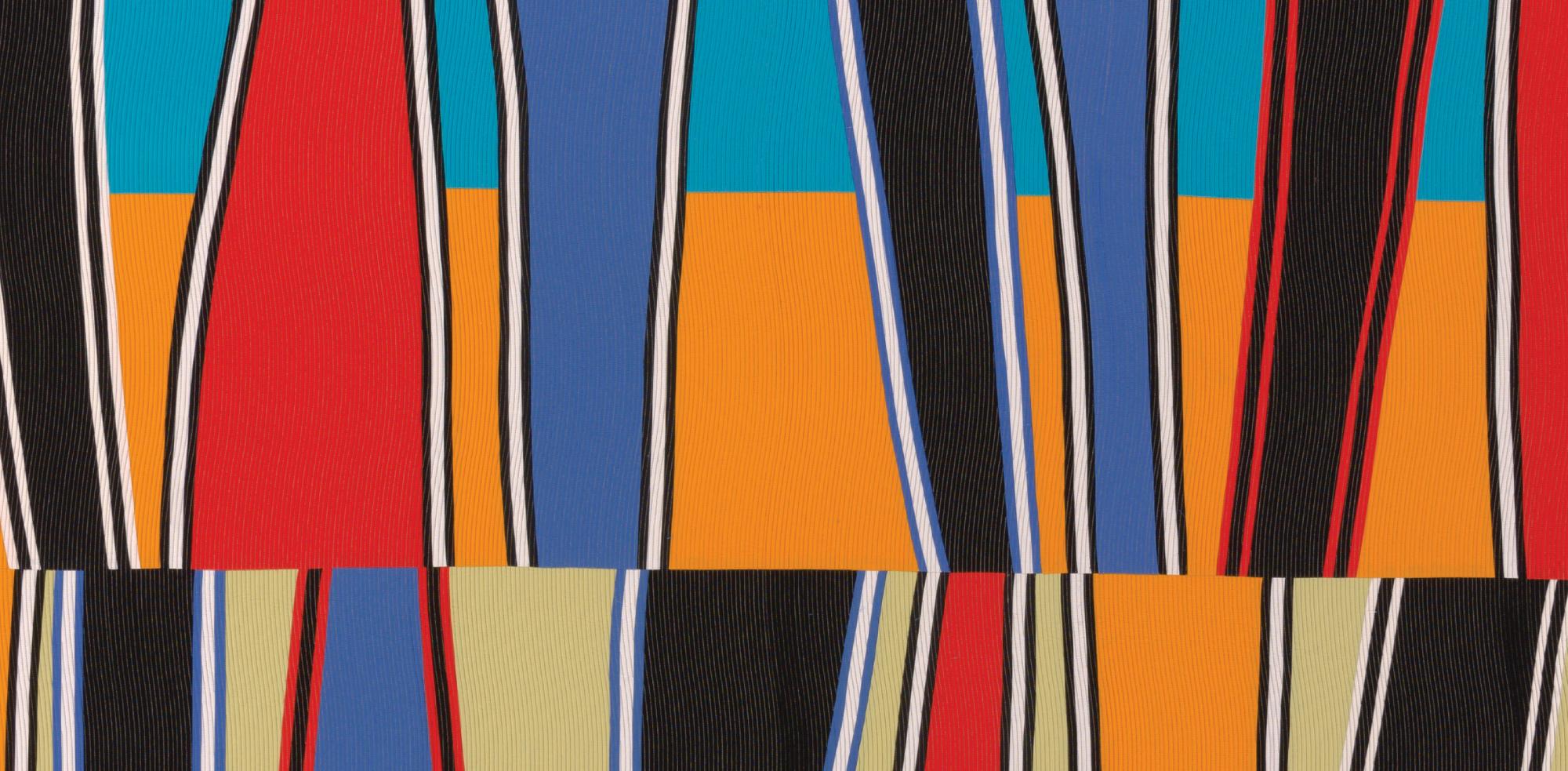
Nancy Crow
Drawings: Monoprints and Riffs
Aug 4, 2020 - March 10, 2021

DRAWINGS: MONOPRINTS and RIFFS showcases two types of contemporary quiltmaking created by artist Nancy Crow in the period of 2011-2020. During this time, Crow focused on monoprints and machine-pieced quilts. All are explorations of color and balance, form and texture, visual tension and meaning. Crow considers these works to be quilted drawings.
The drawing inherent in Crow’s machine-pieced quilts is a process of strength and freedom, as she uses the natural swing of her arm and hand to manipulate a rotary cutter to create long, fluid lines. The sometimes graceful and sometimes quirky lines are transformed on her design wall, without a preconceived plan, into powerful sequenced images with a vibrating tension. Crow deliberately challenges herself to create large pieces that grab the viewer’s attention.
Crow’s drawing takes form in her monoprints series in marks she carves from a layer of thickened dye applied to a flat surface. In a lightning-quick process she creates tangles of lines, curves and shadows that result in pieces with a tangible depth and dimension. The process is laborious and fraught with potential errors that result in blurred lines and smudged spotting, with numerous pieces relegated to the studio floor before they have dried.
Crow titled her monoprints “Self-Portraits” in recognition of the inner struggle she grappled with while committing to a rigid schedule of eight to ten hour days, one after another, embracing the uncomfortable and often frustrating process of learning a new craft. The results, a culmination of more than two years of determined and intensive effort “are focused, forceful images of her soul.”
I AM WALKING THE WALK.
TOTALLY FOCUSED.
PAYING ATTENTION.
TO BED EARLY. UP EARLY.
10-12 HOUR DAYS.
COMPUTER TIME REDUCED TO 30 MINUTES PER DAY.
NO PHONES IN THE STUDIO.
ALL NECESSARY PREPARATIONS PREDICATED ON EFFICIENCY.
WET STUDIO ORGANIZED.
USING THE FEWEST TOOLS TO FACILITATE MARK-MAKING.
STACKS OF FABRICS PREPARED.
CORRALLING THOUGHTS.
GOING FORWARD.
MAKING MISTAKES.
NOT LOOKING BACK.
LEARNING.
LOOSENING UP.
FEELING THE THRILL. DAY AFTER DAY.
KEEPING THE ROUTINE.
SHORT ONES. LONG ONES.
SELF-PORTRAITS OF WHO I AM.
Click Here for a virtual guided tour of this exhibition.
Click here to read an article about the exhibition in the Omaha World Herald.
NOTICE: No photography in this exhibition, please.
Photographs of this exhibition may not be used or reproduced without written permission.